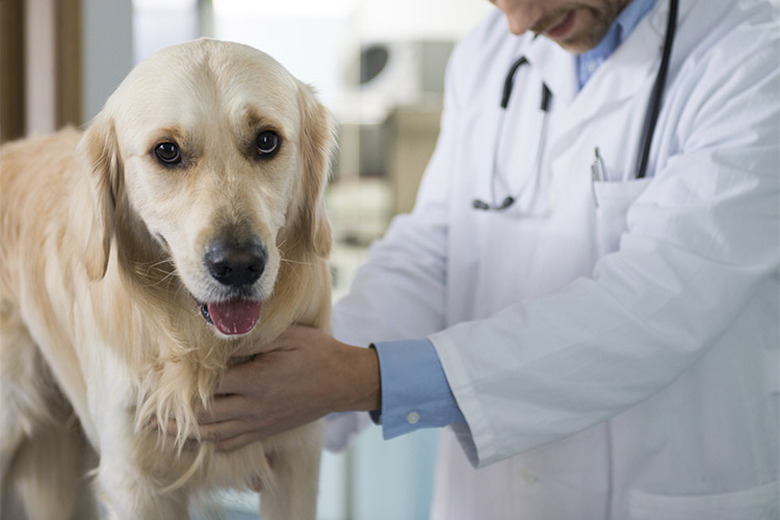Canine Lymphedema
If your dog retains fluid in his legs, it's possible he's suffering from lymphedema, or abnormal flow of lymph in his body. The legs are most often affected, but lymphedema can also appear in the tail, ears and abdomen. You'll notice swelling, which, unlike some other causes of swelling in dogs, isn't painful. Your dog will likely let you feel the swollen tissue without objection.
Lymphedema
The clear fluid called lymph circulates via nodes and vessels throughout the body, protecting it from infection and disease. It produces lymphocytes, cells that fight infection. Anything that obstructs lymph circulation can result in lymphedema, causing failure of the lymphatic fluid to drain. When your dog's skin swells because of lymphedema, he could develop a secondary bacterial infection. If an infection is present, your dog exhibits signs of pain.
Affected Breeds
While any dog can experience lymphedema, it's a congenital issue in certain breeds, including the Labrador retriever, the Old English sheepdog, the borzoi, the Rottweiler, the German shepherd, the German short-haired pointer, the Great Dane, the Belgian Tervuren, the bulldog and the poodle. When it's hereditary, or primary, lymphedema results from lymphatic system malformations. Primary lymphedema shows up in puppies and younger adult dogs, while the secondary form usually affects only older animals. Dogs diagnosed with the hereditary form of lymphedema shouldn't be bred.
Causes
For dogs developing lymphedema without a hereditary component, serious medical conditions could underlie the swelling. That includes heart disease or cancer, as well as a reaction to surgery or radiation. Dogs experiencing trauma or exposed to toxic substances might come down with lymphedema. It can also result from an immune-system reaction, due to food or other allergy triggers.
Treatment
If lymphedema symptoms are mild, your vet might take a wait-and-see attitude. She'll run tests, including blood work and a skin biopsy, to discover the underlying issue causing the swelling. In more serious cases, your dog's legs or tail might require bandaging. If he's suffering from a secondary infection, your vet might prescribe antibiotics for treatment. Many dogs with lymphedema experience episodes throughout their lives but are otherwise normal, relatively healthy canines. In some dogs with a history of lymphedema, strenuous exercise causes flareups.
By Jane Meggitt
References
petMD: Lymphedema in Dogs
University of Prince Edward Island: Lymphedema
University of Prince Edward Island: What Is Lymphedema?
Washington State University College of Veterinary Medicine: Lymphatic System
Vetstream: Diseases of the Lymphatic Vessels
About the Author
Jane Meggitt has been a writer for more than 20 years. In addition to reporting for a major newspaper chain, she has been published in "Horse News," "Suburban Classic," "Hoof Beats," "Equine Journal" and other publications. She has a Bachelor of Arts in English from New York University and an Associate of Arts from the American Academy of Dramatics Arts, New York City.
